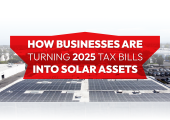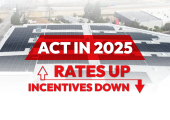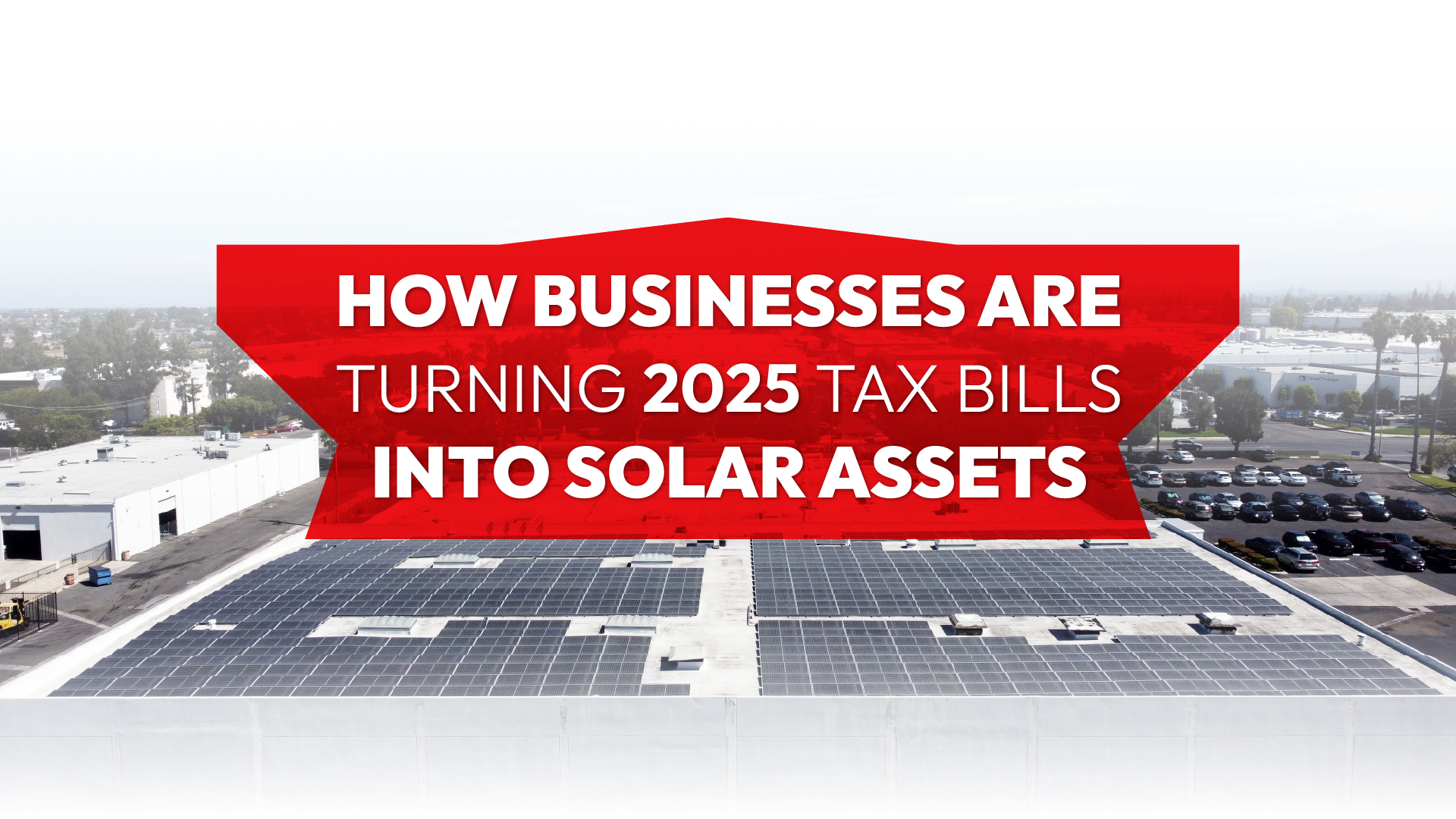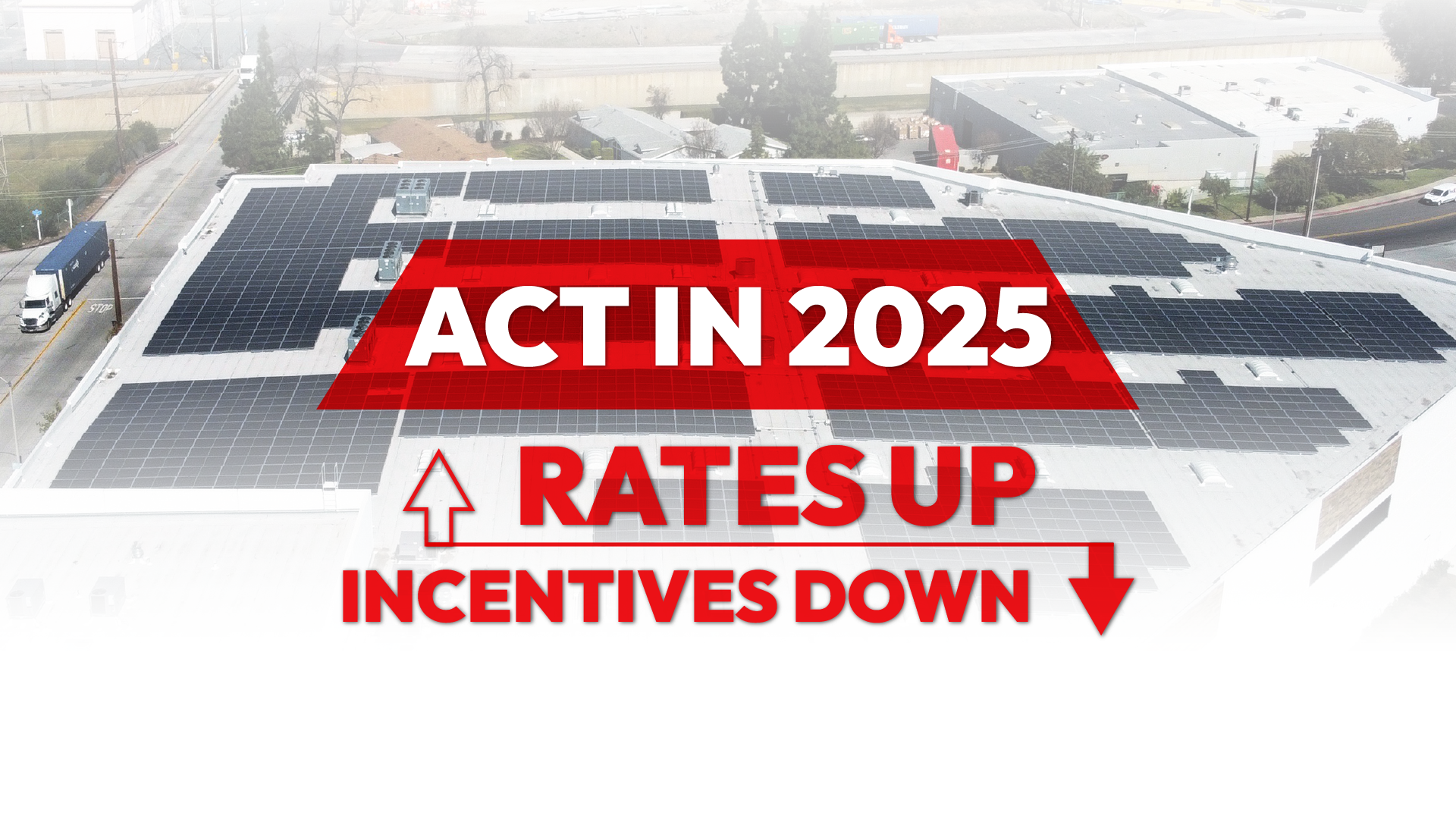The Federal Solar Investment Tax Credit (ITC)—codified under Section 48E—remains one of the most powerful federal policies driving renewable energy adoption across the United States. Since its creation in 2006, the ITC has helped spark billions of dollars in private-sector investment, fueled rapid growth in the U.S. solar industry, and supported the nationwide reduction of carbon dioxide emissions by accelerating the transition to clean energy.
For business owners, the ITC continues to be a critical lever for reducing upfront solar costs, cutting federal income tax liability, and unlocking bonus credits under the Inflation Reduction Act (IRA) and newer 2025 tax law changes. Whether your company is considering a commercial solar energy system, a solar farm, or pairing projects with battery storage technology, understanding the updated rules for 2025 is essential for maximizing return on investment.
What Is the Solar Investment Tax Credit for Businesses?
At its core, the ITC is a 30% federal tax credit that allows businesses to deduct a portion of eligible solar project costs directly from their tax liability. Unlike a tax deduction, which reduces taxable income, a credit reduces the amount owed to the IRS dollar-for-dollar—making the ITC one of the most impactful financial tools available to clean-energy investors
Covered technologies and equipment include:
- Solar photovoltaic systems (panels, inverters, racking, junction boxes)
- Integrated solar roofing tiles that function as both roofing and power generation
- Solar water heaters for commercial and industrial use
- Energy storage systems, including lithium-ion and emerging technologies such as flow batteries
- Solar arrays from rooftop scale to multi-MW solar farms
The ITC also extends to other renewables such as Geothermal Electric, geothermal heat pumps, fuel cells, Combined Heat & Power (CHP), and Waste Energy Recovery projects. This wide applicability makes the ITC a versatile tool for businesses looking to diversify their energy portfolios.
Eligibility, Deadlines, and Safe Harboring
Under the One Big Beautiful Bill Act (OBBBA) passed in July 2025, deadlines for ITC eligibility have been adjusted:
- Construction Start Deadline: Projects must begin construction by July 4, 2026, to receive the full 30% credit.
- In-Service Deadline: Projects that start later must be placed into service by December 31, 2027
Safe Harbor Updates
- As of September 2, 2025, the IRS eliminated the 5% expenditure safe harbor for most commercial-scale projects. Instead, businesses must now satisfy the Physical Work Test to establish a construction start.
- Only “low-output” systems under 1.5 MW can still use the 5% safe harbor method.
- A Continuity Safe Harbor still allows up to 4 years from the start of construction to complete the project.
Important Phase-Out Note:
While the solar ITC begins phasing down after mid-2026 under the new rules, the ITC for standalone and paired energy storage systems remains unchanged. This creates a critical planning opportunity for businesses that want to lock in maximum solar incentives now, while still knowing storage will maintain its 30% credit beyond 2026.
Key Eligibility Factors:
- Labor requirements: To qualify for the full ITC plus add-on credits, large projects must comply with prevailing wage and apprenticeship rules.
- Domestic Content: An extra 10% credit is available for projects using domestically sourced materials that meet “Made in America” thresholds.
- Foreign Entity Restrictions: New rules disqualify projects that use materials or financing tied to certain “foreign entities of concern,” particularly in China.
- Documentation: Businesses must file IRS Form 3468 for commercial ITC claims and maintain detailed records of equipment, labor compliance, and sourcing.
Bonus Credits and Add-On Incentives
The Inflation Reduction Act significantly expanded opportunities for businesses by layering “bonus” credits on top of the base ITC. These include:
- Energy Community Bonus: An additional 10% credit for projects in geographic areas historically tied to fossil fuel industries.
- Low-Income Community Bonus: Added incentives for projects serving low-income communities or located on Tribal Land.
- Direct Pay: Designed for tax-exempt entities such as hospitals, schools, or local and tribal governments, this mechanism allows organizations to receive cash payments rather than tax offsets.
- Accelerated depreciation: Through the Modified Accelerated Cost Recovery System (MACRS), businesses can further lower taxable income by rapidly depreciating solar investments.
When stacked together, these benefits can boost effective federal support from 30% to as high as 50–60% of project costs, making solar an attractive investment even in regions with lower electricity costs.
Federal Spending, Revenues, and Policy Drivers
The Solar Investment Tax Credit (ITC) generates outsized economic benefits. A comprehensive analysis by BW Research indicates that $170.8 billion in clean energy tax credits (including solar ITC) between 2025–2031 will collectively spur $1.08 trillion in total investment, support 285,310 jobs annually, and contribute over $32 billion to GDP, with $4.13 billion in tax revenues. This implies substantial private-sector activity per dollar of federal credit, reinforcing industrial competitiveness and EPC workforce demand.
At the federal level, the credit influences both federal spending and federal revenues, with the Treasury Department and the U.S. Department of Energy (DOE) monitoring compliance. Programs like the Clean Electricity Investment Tax Credit and oversight of Foreign Entities of Concern ensure the ITC promotes energy independence while safeguarding U.S. economic interests.
Legislative milestones, including the Big Beautiful Bill, underscore the bipartisan recognition of solar’s importance in national energy strategy. By aligning tax incentives with sustainability goals, the ITC represents a rare intersection of fiscal responsibility, climate policy, and industrial competitiveness.
Additional Incentives for Businesses
While the ITC is the centerpiece of federal policy, businesses can also leverage additional programs:
- USDA REAP (Rural Energy for America Program): Through the Inflation Reduction Act, USDA has allocated over $2 billion to support renewable energy and energy efficiency grants and loans for agricultural producers and rural small businesses through 2031.
- State-level programs, such as Virginia solar incentives and Massachusetts’ SMART Incentive Expansion, complement the ITC.
- Utility programs offering Public utility subsidies for solar adoption.
- The Residential Clean Energy Credit, which applies to mixed-use or small commercial/residential projects.
- Local net metering policies allowing credit for excess electricity generated, often leading to long-term savings through net metering credits.
Businesses can also rely on tools such as a solar payback calculator to measure expected ROI, or pursue certifications like Energy Star to enhance building performance and compliance.
The Role of Storage, Payback, and ROI
Pairing a solar installation with battery storage technology maximizes energy independence, particularly during peak demand or grid outages. For large solar farms and commercial solar energy systems, this integration is essential to balancing intermittent solar output with consistent demand.
And with the storage ITC staying locked at 30% beyond 2026—even as the solar ITC begins to step down—batteries provide both financial certainty and long-term operational value.
Businesses that integrate storage not only extend the value of their solar PV system but also position themselves to take advantage of future production tax credit opportunities. Modeling shows that in California, commercial solar systems can achieve an average payback in about 5.7 years, with post-incentive annual savings of around $2,610 on system costs near $15,000.
By modeling ROI with a solar payback calculator, companies can predict payback periods ranging from 4 to 8 years, depending on electricity prices, available incentives, and solar costs.
Compliance and Documentation
Proper documentation is essential for claiming the ITC. Businesses must:
- File IRS Form 3468 (corporate/commercial projects) or IRS Form 5695 (smaller projects).
- Record expenses, installation dates, and the system’s operation metrics.
- Demonstrate compliance with prevailing wage rules, sourcing standards, and safety codes.
- Retain proof of eligibility for net metering credits, safe harboring, or tax-exempt entities applying under Direct Pay.
Failure to comply with these standards may result in denied claims or IRS audits, underscoring the value of working with an experienced EPC partner.
Conclusion: Turning Policy Into Savings
The solar investment tax credit for businesses represents more than just a line item in the tax code—it’s a tool for building resilience, reducing energy expenses, and investing in the future of the US solar industry.
With the solar ITC scheduled to fade beginning mid-2026, but storage credits remaining steady, businesses that act now can capture the full 30% benefit across both solar and storage. For companies in California and beyond, now is the time to act. With ITC rates at their peak, layered incentives like Energy Community Bonus available, and solar costs continuing to decline thanks to private-sector investment and federal support, the window to maximize savings is wide open. And partnering with a qualified EPC ensures compliance, optimization of credits, and long-term energy success.
Partner with Revel Energy
Revel Energy specializes in helping California’s commercial and industrial property owners take full advantage of the Federal Solar Investment Tax Credit and related incentives.
As a trusted EPC partner, we design and build tailored solar and storage solutions that align with your financial goals, reduce operational costs, and ensure compliance with evolving federal policy. From navigating IRS documentation to optimizing projects for bonus credits, our team guides businesses every step of the way toward a more profitable, greener future.
FAQ
- What percentage of solar costs can businesses claim under the ITC?
Businesses can deduct up to 30% of eligible solar costs directly from their federal income tax liability through the Federal Solar Investment Tax Credit.
- Does the ITC cover battery storage technology?
Yes. Standalone Energy Storage Systems, including advanced battery storage technology, qualify for the ITC, even when not directly tied to solar panels.
- Are solar roofing tiles and solar water heaters included?
Yes. Both solar roofing tiles and solar water heaters (including Solar Water Heat) are eligible if they meet Energy Star and DOE efficiency standards.
- Can tax-exempt entities benefit from the ITC?
Yes. With Direct Pay, tax-exempt entities like nonprofits, schools, and local and tribal governments can receive cash in lieu of credits.
- How do net metering and net metering credits affect ROI?
Excess electricity generated by a solar electric power system can earn credits through net metering, significantly shortening payback periods.
- Are geothermal and other renewable energy sources eligible?
Yes. Eligible technologies include Geothermal Electric, geothermal heat pumps, fuel cells, Combined Heat & Power, and Waste Energy Recovery.
- How do I calculate my payback period?
Tools like a solar payback calculator—offered by EPCs such as Boston Solar—help businesses forecast ROI based on solar costs, incentives, and utility savings.








